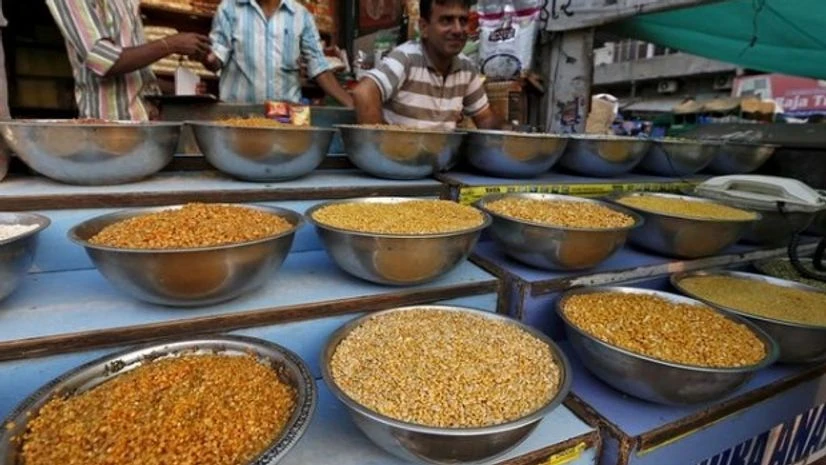As the country grapples with recurring increase in pulses price, scientists at the Indian Council of Agriculture Research (ICAR) have come up with a solution to address the shortage in the commodity.
Scientists at Kanpur-based Indian Institute of Pulses Research (IIPR), an affiliate organisation of ICAR, have developed an arhar (tur) variety, which has the potential to give much higher yield - almost double - compared to existing variants.
The average yield of existing pulses varieties in the country is 9-10 quintals a hectare, but the new variety developed by IIPR scientists has the potential to give 20 quintals.
Also Read
Because of low yields, pulses accounts for less than 10 per cent of India's annual foodgrains output, though it occupies 20 per cent of area under foodgrains.
The central government, along with ICAR, is extensively promoting this variety - IPA-203 - in the northern and central regions of the country, where it wants to push pulses cultivation by encouraging farmers to shift from wheat and rice. "We are trying to popularise this new seed variety through our network of 150 seed stations, Krishi Vigyan Kendras, Agriculture Universities and also National Seed Corporation," N P Singh, director of IIPR, told Business Standard.
The pulses variety took a long time to get commercialised as a lot of changes were made in properties. Arhar (tur) is mostly grown in Maharashtra, Madhya Pradesh and Karnataka, while it is consumed almost in all parts of the country.
A recent study done by rating agency CRISIL showed that 70 per cent of India's annual pulses production comes from the four states of Madhya Pradesh, Maharashtra, Rajasthan and Uttar Pradesh.
As less than 20 per cent of total area under pulses is irrigated, a slight change in monsoon pattern in any part of these four states could seriously jeopardise the domestic supply leading to spurt in prices.
The same analysis also showed that except for Rajasthan, all the other states have seen acute monsoon deficiency in four out of the past eight years starting from 2004.
Arhar prices touched an all-time high of Rs 200 a kg a few months ago due to shortage in supplies.
The retail price of other pulses varieties, except chana, is also more than 2014 due to a drop in production on account of three consecutive drought seasons in Maharashtra, pest attack in Madhya Pradesh and damage to the previous rabi crop.
India produced 17.34 million tonnes (mt) of pulses in 2014-15 crop year, around 1.82 mt less than last year. Of this, arhar production was 0.43 mt less.
Although the existing varieties are mostly short-duration ones, where the crop gets ready in four to six months, the newly developed takes a longer time to germinate, almost nine to 10 months.
In others words, the new variety of pulses developed by scientists will take two seasons to mature.
"We had tried to develop high-yielding short-duration pulses varieties, but it has not been very successful in north India because of pest and nilgai attack," said Singh.
He said short-duration pulses varieties have not been found to be very successful in the northern parts of the country mainly due to attack by 'maruca vitrata' pest and also the nilgai menace.
In Maharashtra and Karnataka, 60 per cent of the arhar varieties sown are of short-to-medium duration, as the chance of pest attack is less in those parts. To popularise the crop in the northern belt, varieties which are not susceptible to pests is a must.
"In the long-duration arhar variety which we have developed, the possibility of the crop regenerating from the stub, after an attack by nilgai is more and, hence, the loss to the farmer is less," Singh said.
If this new variety of pulses catches on with growers, it could end shortage of pulses.
INNOVATING FOOD
-
The Centre, along with research institutes, is popularsing the new variety of arhar (tur)
-
The new variety gives double the yield than existing ones, but the time it takes to mature is also more
-
Short-duration varieties of pulses are not popular in North India as these have been found susceptible to pests and attack by nilgai

)
